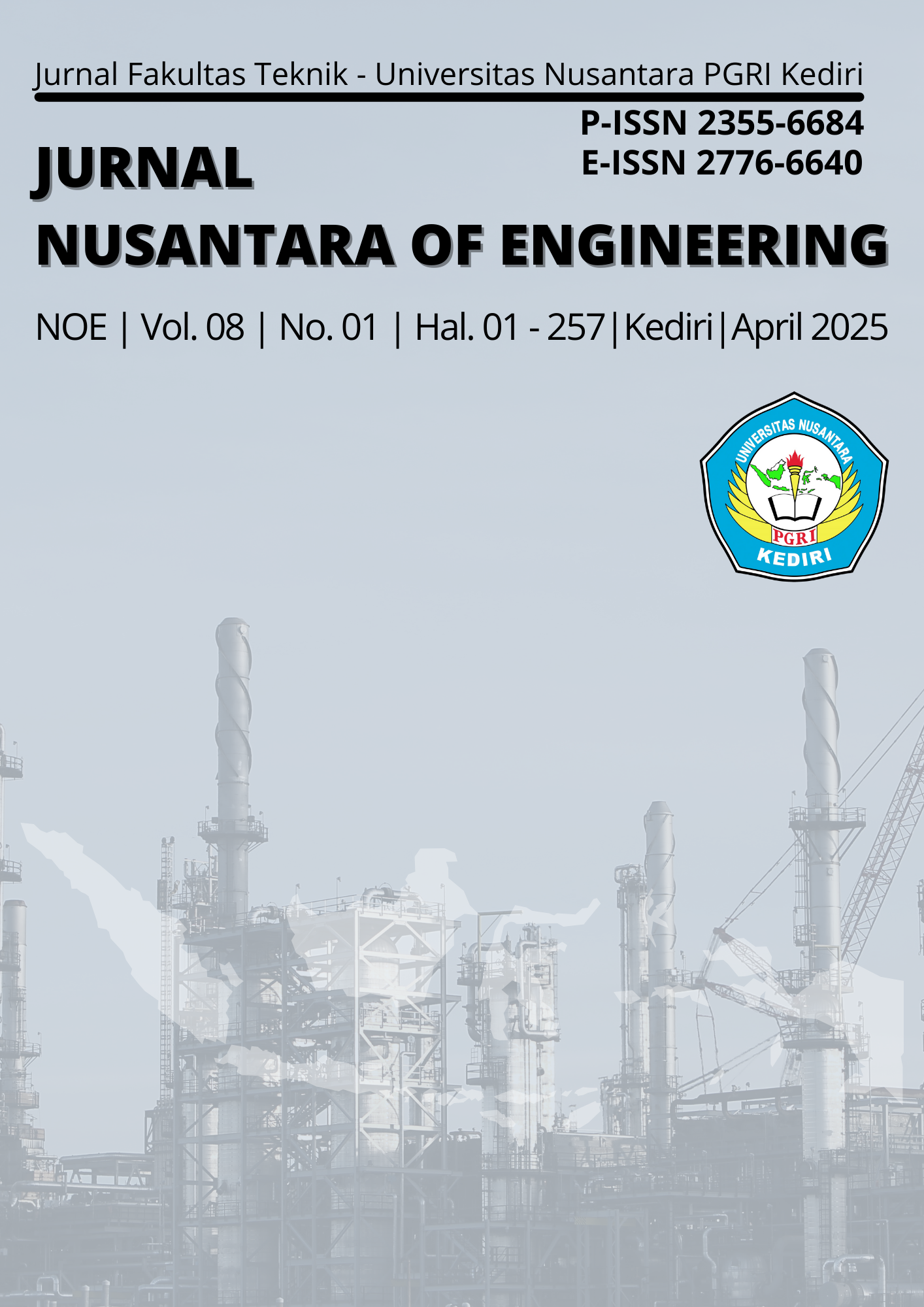Pengukuran Kinerja Dengan Pendekatan BSC Dan AHP Sebagai Alat Strategi Meningkatkan Kinerja Bandara XYZ
DOI:
https://doi.org/10.29407/noe.v8i01.23109Keywords:
Balance Scorecard, LAKIP, Analytical Hierarchy Process.Abstract
XYZ Airport is a public sector organization operating in the service sector. The vision and mission of XYZ Airport is the realization of the provision of airport services in accordance with standards of safety, security and quality airport services that are reliable and competitive. To make this happen requires commitment from all parties. A good organization must understand and understand the internal strengths and weaknesses of the institution, therefore performance measurement is needed with the aim of knowing the extent to which organizational goals have been achieved and performance improvement. In this study, researchers chose performance measurement by applying the Balance Scorecard method as a strategic tool at XYZ Airport, integrated with the Government Agency Performance Report (LAKIP), which was then mapped into a mapping matrix of Customer, Financial, Internal Business and Learning and Growth Perspectives. From this perspective, weight is given using the Analytical Hierarchy Process method. The results of the measurement of the stakeholder perspective score of 42.5 achieved a good predicate (yellow), the financial perspective score of 15% received a bad predicate (red). 17% of the internal business process perspective received a good title (yellow), then 9% of the growth and learning perspective received a very good title (green). Based on these results, to achieve the goal, airports need to focus on strategic targets that are far from the target, including improving airport infrastructure to accommodate large-body aircraft as a lead indicator for increasing the number of passengers, aircraft movements and increasing PNBP.
Downloads
References
[1] H. Kurnia, I. Setiawan, and H. Hernadewita, “Integrasi Lean dan Green Manufacturing Untuk Mengurangi Pemborosan Proses Rekrutmen Karyawan Pada Industri Manufaktur di Indonesia,” J. Rekayasa Sist. Ind., vol. 11, no. 2, pp. 145–156, Oct. 2022, doi: 10.26593/jrsi.v11i2.5608.145-156.
[2] H. Hartini and D. Habibi, “Pengelolaan Kinerja Berbasis Balanced Scorecard,” Indo-Fintech Intellectuals J. Econ. Bus., vol. 3, no. 2, pp. 198–209, 2023, doi: 10.54373/ifijeb.v3i2.156.
[3] N. Yuningsih, “PENERAPAN MANAJEMEN KINERJA PEGAWAI DI INSTANSI PEMERINTAH,” J. Pengemb. Wiraswasta, vol. 19, no. 2, 2018, doi: 10.33370/jpw.v19i2.133.
[4] H. Chabiba, Alfi Chusnatul., “Strategi Manajemen dan Strategi Pemasaran PT Bank Central Asia Cabang KCP Comal Indonesia,” 2023, [Online]. Available: https://www.researchgate.net/profile/%0A
[5] S. Kholil, M., Haekal, J.H, “Desain Lean Manufacturing untuk Mengurangi Pemborosan dalam Proses Produksi Gear Menggunakan Pendekatan Metode VSM dan Kaizen (Studi Kasus: Produk K56 Gear Primary Driven),” J. Ilm. dan Penelit. Tek. 7(8), 1-9, 2020.
[6] J. Haekal, “Performance Assessment of Wheat Flour Suppliers Based on Balanced Scorecard (BSC),” Int. J. Sci. Acad. Res., vol. 03, no. 02, 2023, doi: 10.54756/ijsar.2023.v3.2.3.
[7] J. Purba, HH, Saroso, DS, & Haekal, “PELATIHAN APLIKASI 5S (SEIRI, SEITON, SEISÿ, SEIKETSU, DAN SHITSUKE) UNTUK MENINGKATKAN KUALITAS LINGKUNGAN KERJA PADA LAYANAN INDUSTRI,” ICCD, vol. (Vol. 2, N, 2020.
[8] X. Rafiq, Muhammad Rafiq, S. Zhang, Jiahai Yuan, and & S. M. Naz, “Impact of a Balanced Scorecard as a Strategic Management System Tool to Improve Sustainable Development: Measuring the Mediation of Organizational Performance through PLS- Smar,” Sustain. 12, 1365, 2020, doi: DOI:10.3390/su12041365.
[9] A. T. Biswan and S. Alim, “Praktik Balanced Scorecard Sektor Publik: Sistem Pengukuran Kinerja Untuk Meningkatkan Performa Organisasi,” J. Bina Manaj., vol. 9, no. 2, pp. 184–205, 2021, doi: 10.52859/jbm.v9i2.159.
[10] et al Alamsyah, L.F., Firdaus, “Strategi peningkatan kinerja menggunakan balanced scorecard pada pemerintah kota Jakarta Utara,” J. Manaj. Pembang. Daerah, 9(2), 17-24., 2017.
[11] C. Andik Lukman Hakim, chmad Zaky, MSA., Ak., SAS., CMA., “THE IMPLEMENTATION OF PUBLIC SECTOR PERFORMANCE MEASUREMENT WITH BALANCED SCORECARD WITH STAKEHOLDER PERSPECTIVE (CASE STUDY ON RSUD DR. SOETOMO SURABAYA),” 2018.
[12] L. Lukmandono, M. Basuki, M. J. Hidayat, and V. Setyawan, “Pemilihan Supplier Industri Manufaktur Dengan Pendekatan AHP dan TOPSIS,” Opsi, vol. 12, no. 2, p. 83, 2019, doi: 10.31315/opsi.v12i2.3146.
[13] N. K. Y. Suartini, D. G. H. Divayana, and L. J. E. Dewi, “Comparison Analysis of AHP-SAW, AHP-WP, AHP-TOPSIS Methods in Private Tutor Selection,” Int. J. Mod. Educ. Comput. Sci., vol. 15, no. 1, 2023, doi: 10.5815/ijmecs.2023.01.03.
[14] D. Nurdiansyah, N. Luh, P. Hariastuti, A. Pranata, and B. Setya, “Analisis Pemilihan Supplier Bahan Baku dengan Menggunakan Pendekatan Vendor Performance Indicator ( VPI ) dan Metode Analytical Hierarchy Process ( AHP ) ( Studi kasus : PT . Romi Violeta ),” vol. 4, no. Senastitan Iv, 2024.
Downloads
Published
Issue
Section
License
Copyright (c) 2025 M.Ali Akbar, Ni Luh Putu Hariastuti

This work is licensed under a Creative Commons Attribution-ShareAlike 4.0 International License.
Authors who publish with this journal agree to the following terms:
- Copyright on any article is retained by the author(s).
- The author grants the journal, right of first publication with the work simultaneously licensed under a Creative Commons Attribution License that allows others to share the work with an acknowledgment of the work’s authorship and initial publication in this journal.
- Authors are able to enter into separate, additional contractual arrangements for the non-exclusive distribution of the journal’s published version of the work (e.g., post it to an institutional repository or publish it in a book), with an acknowledgment of its initial publication in this journal.
- Authors are permitted and encouraged to post their work online (e.g., in institutional repositories or on their website) prior to and during the submission process, as it can lead to productive exchanges, as well as earlier and greater citation of published work.
- The article and any associated published material is distributed under the Creative Commons Attribution-ShareAlike 4.0 International License








